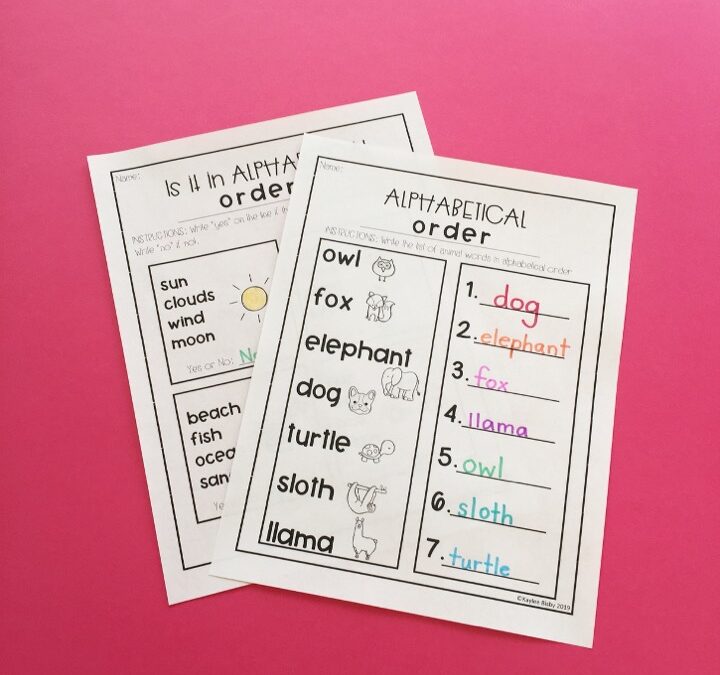Knowing how to put things into alphabetical order and how to find things that are in alphabetical order is a skill we use often in our lives. That is one reason why I like to teach alphabetical order in my 2nd grade classroom. But to be honest, it can be a hard concept for many students. But over the years of teaching, I have found some good tricks when it comes to teaching alphabetical order. So today I thought I would share how to teach alphabetical order to lower elementary students.
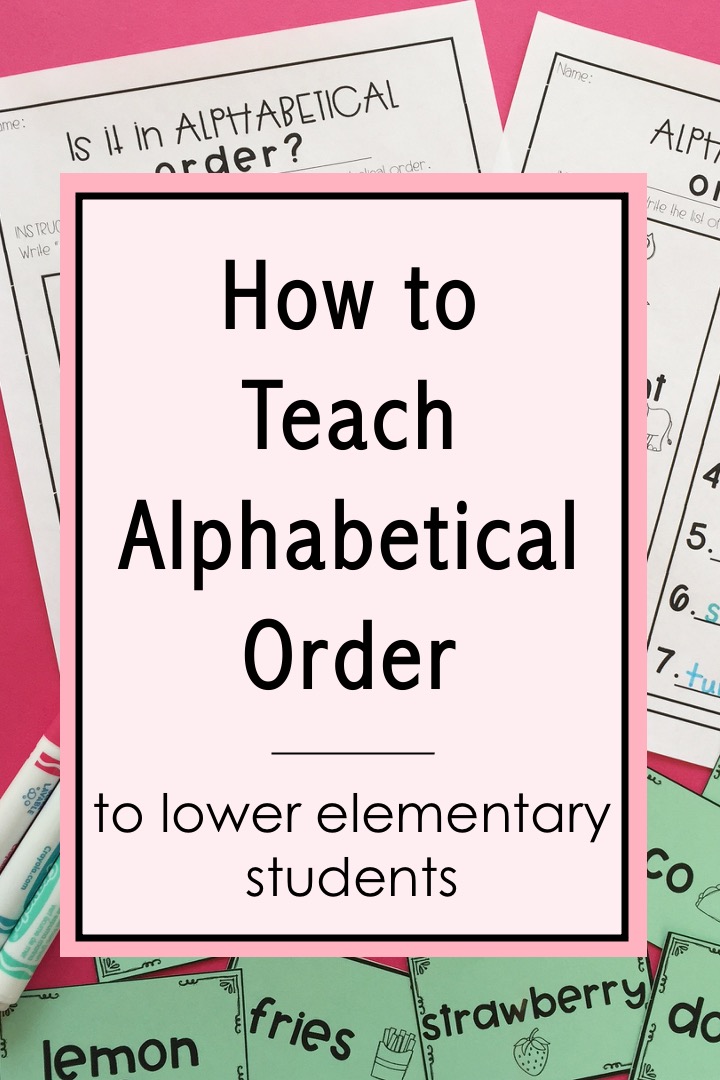
Teach Alphabetical Order
The common core standards want students to learn dictionary skills. This is why alphabetical order comes into our curriculums. But to be honest, I don’t even have a dictionary in my classroom. So to start off our lesson about alphabetical order, I like to show my students all the ways we use alphabetical order in our lives. This makes the skill more relevant to students. And because of this, they are more invested in the lesson.
I make a PowerPoint and display these ways. These ways include:
Organizing Books and Libraries: Explain to children that books in libraries or bookstores are often organized by the author’s last name or the book’s title in alphabetical order. This helps them locate specific books easily and quickly.
Sorting and Finding Words in Dictionaries: Introduce the concept of dictionaries and show children how words are listed in alphabetical order.
Arranging Names: Help children understand that names can be arranged in alphabetical order. For instance, when lining up or making class lists, their classmates’ names can be organized in alphabetical order to keep things organized and fair.
Indexes and Glossaries: Point out that indexes and glossaries in books often use alphabetical order to help find specific information. This can be demonstrated by showing them how to use the index or glossary to locate topics or definitions they are looking for.
Filing Documents: Explain how documents, such as files or folders, are often arranged in alphabetical order based on names, topics, or categories. Help children understand that this organization method helps locate specific documents efficiently.
Phone Books and Contact Lists: If phone books are still used in your area, show children how names and phone numbers are listed in alphabetical order to find specific contacts. Alternatively, explain that digital contact lists on devices also use alphabetical order for easy navigation.
Recipe Books and Menus: Show children how recipe books or menus often arrange dishes or ingredients in alphabetical order. Explain that this helps people find their desired recipes or dishes more easily.
Song Lyrics and Music Collections: Introduce the concept that song titles, artists’ names, or albums can be organized in alphabetical order. This can be exemplified by showing children song playlists, music apps, or even their own music collections.
Now I’ll show you how to teach alphabetical order when it comes to direct instructions, guided practice, and independent practice.
Alphabetical Order For 1st Grade – 2nd Grade
Direct Instruction:
After I show my students some ways we use alphabetical order, I like to teach directly what alphabetical order is. It means putting things in the right order from A to Z. I show a couple examples of a list of words that are in alphabetical order. I might show a list of words like banana, apple, and carrot. We would arrange them in alphabetical order like this: apple, banana, carrot. I emphasize that putting things in alphabetical order helps us find things easily and quickly by looking for the letter that comes first in the alphabet.
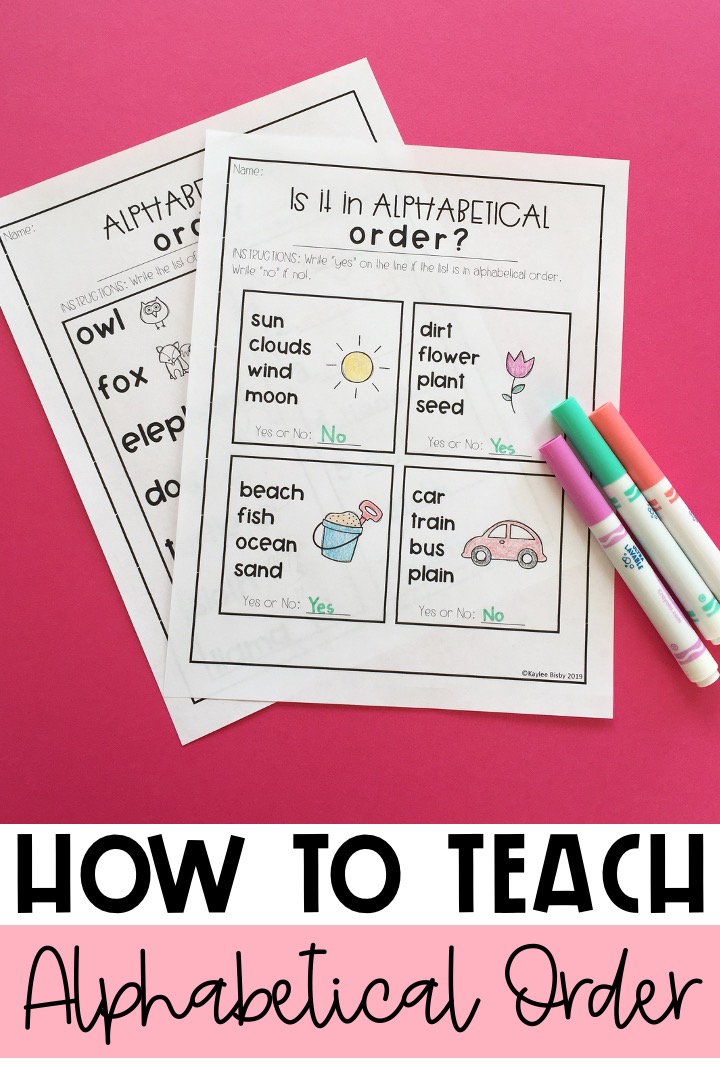
We then practice some more lists together. I display the list, then I go through the alphabet I have displayed above the front whiteboard. I ask simple questions like, “Do any words start with the letter A? B? C?” and so on…
Then students are ready for guided practice.
Guided Practice:
For guided practice I actually get my students writing the words. I have these fun worksheets that have a list of words and some empty lines. I help students with the first few by guiding students through the alphabet. Then I might have them do the last three words by themselves. Then I help students check their work. I like to have a couple days doing these guided practice activities. Students need more practice with alphabetical order than just one lesson. I will slowly let students do more and more on their own.
Find the worksheets I use here.
Independent Practice:
For independent practice, I like to see where students are at with this skill. I have worksheets where it has different lists of four words. Students have to indicate whatever or not the list is in alphabetical order. I take a look at these after students are finished. It helps me know which students need a little extra practice. Find the worksheets I use here.
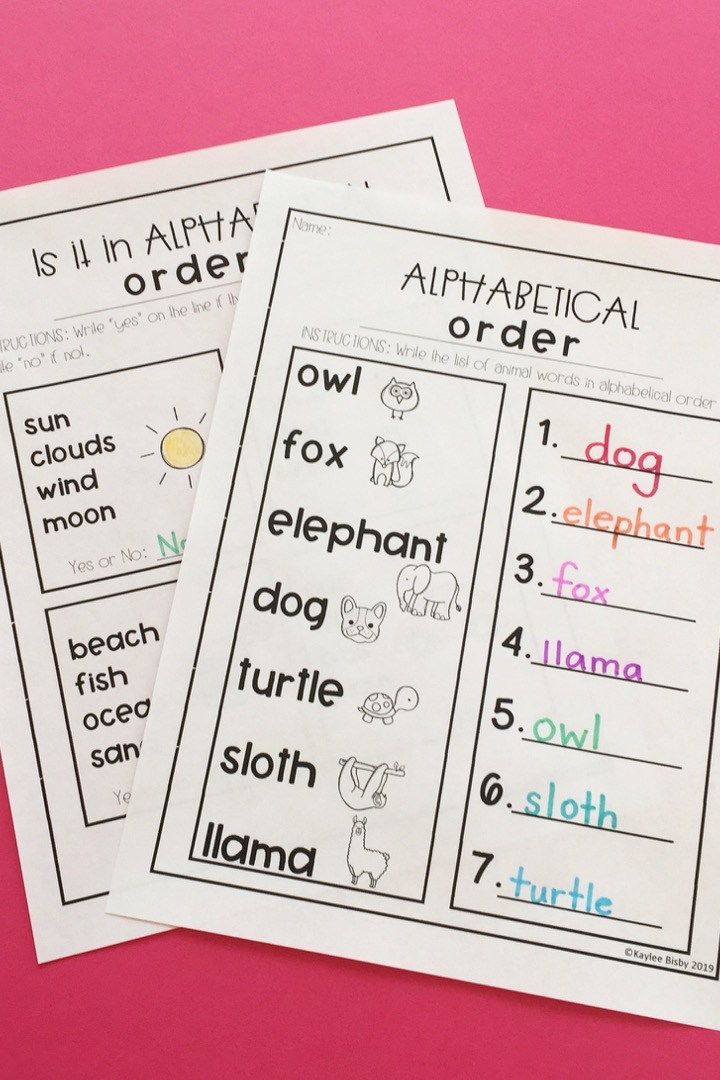
When it comes to the best way to teach alphabetical order, know that most students will need review activities throughout the school year to remember how to do this skill. You can help students keep up on this skill by incorporating fun ways to teach alphabetical order.
Fun Ways to Teach Alphabetical Order
I have different center activities that are fun for students to practice alphabetical order. I have students write our weekly sight words in alphabetical order. I also have card sets of words where students work with a partner to put the words in alphabetical order. Find the word cards I use here.
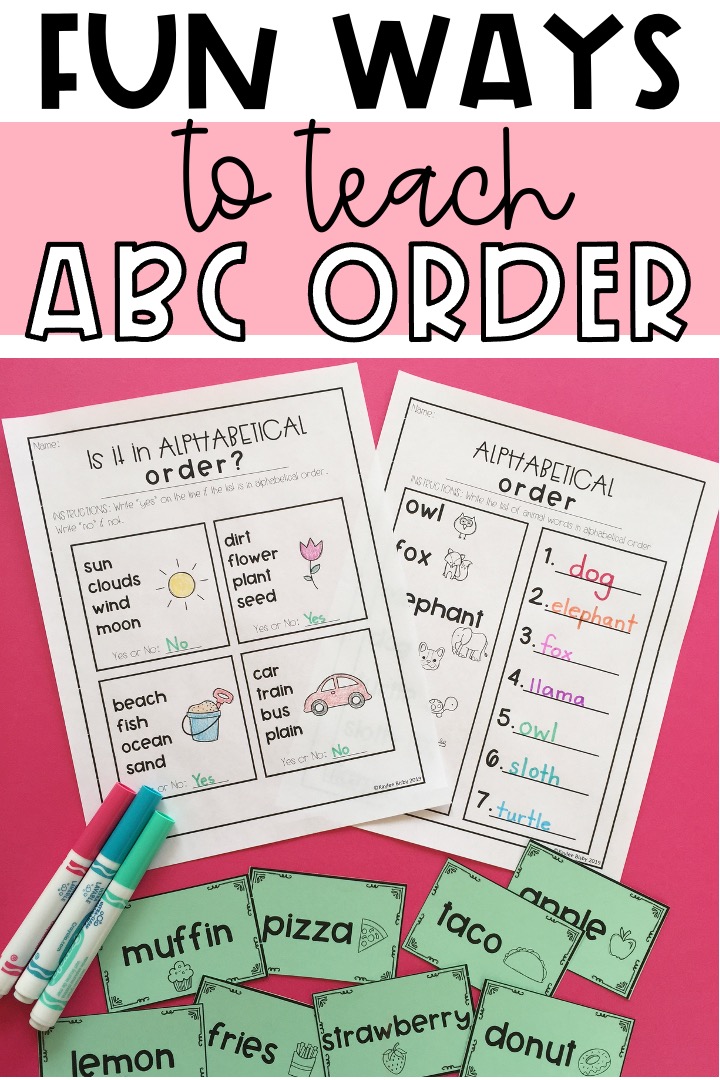
But to make these activities really fun, bring in some interests of your students. I know a lot of students like Pokemon. So I made some cards with different Pokemon. I told my students that Professor Oak had a computer problem and all his Pokemon information got mixed up. He needs their help to organize the Pokemon in Alphabetical order. I have students work with partners and they think it is so fun!
I also like to help students look up words that are already in alphabetical order. I know I said before that I don’t have any dictionaries in my classroom, so I have students use the glossaries in the back of their reading anthology books. I give students a word and they have to find it. We do a few together and then we do races. It’s a lot of fun for students!
I hope you have been able to see that it doesn’t have to be complicated when it comes to how to teach alphabetical order. It’s a real life skill that students will use often.
Learn other vocabulary lessons perfect for 2nd grade here in this blog post: 3 Vocabulary Lessons for 2nd Grade That Make a Big Difference

